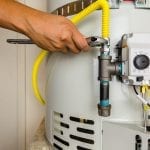Essential Maintenance Techniques for Your Home's Hot Water System
Essential Maintenance Techniques for Your Home's Hot Water System
Blog Article
We've stumbled on this great article relating to Tips on Maintaining a Water Heater listed below on the web and decided it made sense to discuss it with you here.

Warm water is important for day-to-day comfort, whether it's for a revitalizing shower or washing dishes. To guarantee your warm water system runs successfully and lasts longer, normal maintenance is essential. This post provides functional pointers and insights on just how to keep your home's warm water system to stay clear of disruptions and pricey repairs.
Intro
Keeping your home's warm water system could seem complicated, but with a few simple actions, you can guarantee it runs efficiently for many years ahead. This overview covers whatever from recognizing your hot water system to do it yourself upkeep ideas and understanding when to hire expert assistance.
Relevance of Preserving Your Warm Water System
Regular upkeep not only expands the life-span of your hot water system however additionally guarantees it runs successfully. Overlooking upkeep can bring about lowered efficiency, greater power expenses, and also premature failing of the system.
Indicators Your Hot Water System Requirements Upkeep
Recognizing when your warm water system requires focus can protect against major issues. Watch out for indicators such as irregular water temperature level, odd sounds from the heating system, or corroded water.
Recognizing Your Warm Water System
Before diving into upkeep tasks, it's helpful to recognize the basic parts of your warm water system. Normally, this includes the hot water heater itself, pipelines, anode poles, and temperature level controls.
Regular Monthly Maintenance Tasks
Routine monthly checks can help capture small concerns before they escalate.
Purging the Water Heater
Flushing your water heater eliminates debris accumulation, boosting effectiveness and extending its life.
Checking and Replacing Anode Rods
Anode rods avoid rust inside the storage tank. Checking and changing them when worn is important.
Examining and Adjusting Temperature Level Setups
Readjusting the temperature settings ensures optimal performance and safety.
Do It Yourself Tips for Maintenance
You can perform several maintenance tasks yourself to keep your warm water system in top problem.
Looking for Leakages
On a regular basis evaluate pipelines and connections for leaks, as these can lead to water damages and greater costs.
Examining Stress Alleviation Valves
Examining the stress relief valve guarantees it functions properly and avoids excessive pressure build-up.
Insulating Pipes
Protecting hot water pipes reduces heat loss and can save power.
When to Call a Specialist
While do it yourself upkeep is beneficial, some problems require specialist competence.
Complicated Problems Requiring Professional Help
Examples include significant leaks, electric problems, or if your hot water heater is consistently underperforming.
Regular Expert Maintenance Conveniences
Professional upkeep can consist of thorough evaluations, tune-ups, and guaranteeing compliance with security criteria.
Final thought
Routine maintenance of your home's hot water system is essential for performance, longevity, and expense savings. By following these suggestions and knowing when to seek expert aid, you can guarantee a dependable supply of warm water without unforeseen interruptions.
How to Maintain an Instant Hot Water Heater
Before tinkering with your hot water heater, make sure that it’s not powered on. You also have to turn off the main circuit breaker and shut off the main gas line to prevent accidents. Also turn off the water valves connected to your unit to prevent water from flowing into and out of the appliance. 2. When you’re done, you have to detach the purge valves’ caps. These look like the letter “T†and are situated on either side of the water valves. Doing so will release any pressure that has accumulated inside the valves while at the same time avoid hot water from shooting out and burning your skin. 3. When the purge valves’ caps are removed, you have to connect your hosing lines to the valves. Your unit should have come with three hoses but if it didn’t, you can purchase these things from any hardware or home repair shops. You can also get them from retail stores that sell water heating systems. Read the user’s manual and follow it to complete this task properly. When the hosing lines are connected, open the purge port’s valves. 4. You should never use harsh chemical cleaners or solutions when cleaning your unit. Make use of white vinegar instead. It should be undiluted and you’ll probably use about 2 gallons. 5. Now flush your water heater. This task should probably take about 40 minutes. We can’t give you specific directions for this because the procedure is carried out depending on the type, model and brand of your heater. With that being said, refer to the user’s manual. 6. When you’re done draining the unit, you have to turn off the purge port valves again. Remove the hosing lines that you earlier installed on each of the water valves. Put the valve caps (purge port) back in their respective places and be very careful so as not to damage the rubber discs that are found inside these caps. 7. Now that everything’s back in place, check your user’s manual again to find out how to reactivate your water heating system. 8. Once it is working, turn one of your hot water faucets on just to let air pass through the heater’s water supply pipes. Leave the tap on until water flows smoothly out of it. https://www.orrplumbing.com/blog/2014/september/how-to-maintain-an-instant-hot-water-heater/

I hope you enjoyed our excerpt on Tips For Maintaining Your Hot Water Heater. Thanks a ton for taking a few minutes to read through our blog post. Please take a moment to promote this blog if you enjoyed reading it. We value reading our article about How to Maintain Your Water Heater & Prolong its Life.
Click Here Report this page